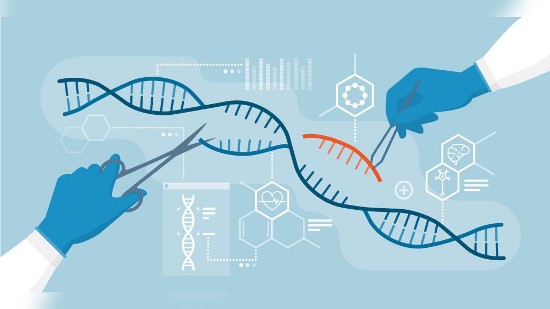Researchers at the Yale Cancer Center in New Haven, Connecticut have improved on the gene-editing accuracy of CRISPR/Cas9, the revolutionary tool first described in the book “A Crack in Creation: Gene Editing and the Unthinkable Power to Control Evolution,” co-authored by Jennifer Doudna and Samuel Sternberg. CRISPR/Cas9 has been a positive disruptor in medicine, and agriculture because it can edit DNA, swapping out and replacing unhealthy genes with healthy ones, or adding new genetic information to a plant to enhance characteristics such as drought resistance. Doudna first described CRISPR in a journal paper published in 2012. Ten years later the technology is being enhanced to do even more using a synthesized peptide.
So what is CRISPR/Cas9? CRISPR stands for Clustered Regularly Interspaced Short Palindromic representing repeated RNA sequences found in genetic information. In bacteria, CRISPR gets used naturally to fight off viral infections by grabbing the invading viral RNA. Its partner is Cas9, a protein within the cell that gets summoned by CRISPR to destroy it. It was Doudna and her colleagues at Berkeley that realized the combination of CRISPR/Cas9 could be repurposed to treat genetic diseases cutting out bad sequences and replacing them with healthy ones. It spawned a revolution in medicine.
At the Yale Cancer Center, CRISPR/Cas9 is used to edit the genetic information in humans suffering from HIV, Fanconi anemia, Sickle Cell Disease, Beta Thalassemia, and more. The paper describing how this is being done was published on March 3, 2022, in the journal, Nucleic Acids Research.
The innovation Yale has brought to CRISPR/Cas9 is described in a press release Yale School of Medicine released on March 2nd. The lead author of the paper, Nicholas Economos, an MD and Ph.D. candidate in genetics, is quoted stating, “While past approaches have used proteins or small molecules to inhibit CRISPR-Cas9, we designed chemically synthesized peptide nucleic acids that can precisely and tightly bind the targeting guide-RNA element within the Cas9 enzyme…This allows us to impart very specific effects on Cas9 at low treatment doses to improve control and safety.”
Cas9 isn’t the only protein that CRISPR can use to slice and dice genetic information. Three years ago I wrote about the discovery of Cas12 for dealing with specific DNA sequences associated with immune response. In that same article, I described CasX, a smaller protein than either Cas9 or 12, making it even more versatile as a tool for CRISPR to use for gene editing and genetic engineering.
Now the Yale Cancer Center has added a new precision tool to accompany CRISPR that uses a synthesized peptide. So how do peptides differ from proteins? Although both consist of strings of amino acids, peptides are much smaller in size. And as I have described above, the smaller the tool as in CasX, the greater precision in doing editing.
Back in December of last year, I wrote about research at the University of Toronto that is using synthesized peptides to prevent COVID-19. The designer peptides created in this research were able to block the COVID-19 spike protein from penetrating human cell membranes. The researchers have used this information to launch a new pharmaceutical company that plans to produce a nose-spray COVID-19 preventive.
















